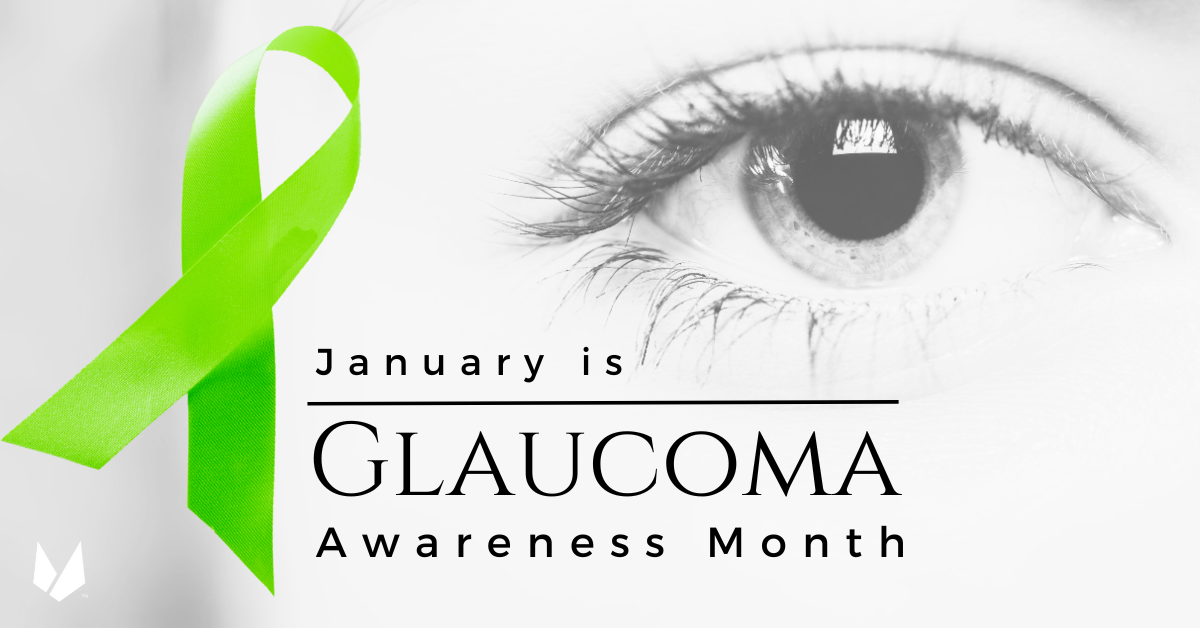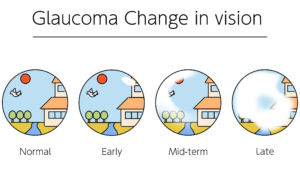Glaucoma Awareness Month

January is National Glaucoma Awareness Month, and it is an important time to help raise awareness for a disease that most people don’t even realize they have. Did you know that over 3 million people in the United States are affected by glaucoma or that a person can lose 40% of their vision before they realize they have it? It is actually the second leading cause of blindness worldwide, according to the Centers for Disease Control and Prevention. Additionally, the National Eye Institute has projected that the number of people suffering from an eye disease will increase by 58 percent and reach 4.2 million by 2030.

Illustration of glaucoma, changes in visual field as glaucoma progresses, medical illustrations
There are actually four major types of glaucoma: open-angle glaucoma, angle-closure glaucoma, also called closed-angle glaucoma, congenital glaucoma, and secondary glaucoma. Glaucoma is a group of eye issues that can damage the optic nerve in your eye. Your optic nerve is a bundle of over one million nerve fibers, and it is responsible for sending the images you see to your brain. There are hundreds of eye diseases or vision issues, but glaucoma, also known as “the sneak thief of sight,” can cause vision loss without noticeable symptoms. As glaucoma develops slowly, it can take 10-15 years before causing severe vision loss or blindness. The first signs of glaucoma can be eye pressure or pain, headaches, halos around light, blurred vision or blind spots, red eyes, or upset stomach and vomiting.
Anyone can get glaucoma, but certain groups are at a higher risk. People of African, Asian, and Hispanic descent are at a higher risk of developing glaucoma. African Americans, who are at the highest risk, should start having regular eye exams after forty. Other high-risk groups include individuals over 60, family members of those already diagnosed, diabetics, and people with severe nearsightedness. It is crucial to talk to family members to understand your family’s history with the disease and encourage them to see an eye doctor.
It is essential for individuals at an increased risk for glaucoma to undergo regular eye exams as they can help prevent unnecessary vision loss. A healthcare provider must check your eyes to detect glaucoma, which can only be confirmed through testing for optic nerve damage using a dilated eye examination or imaging test. Early detection is the key to preventing or minimizing permanent vision loss caused by glaucoma. Therefore, regular eye exams are recommended to catch potential issues early on.
Although glaucoma cannot be fully cured, there are available treatments that can slow down or prevent further vision loss. Maintaining a positive attitude and staying focused on a treatment plan is essential. Medication or surgery can be effective, and early detection is vital to successfully managing the disease. By staying proactive and attending regular eye exams, you can work towards preserving your vision and maintaining your quality of life.
If you’re worried about an aging loved one struggling with glaucoma, a professional caregiver can offer the support they need to maintain their independence and safety at home. And if your loved one is a Veteran or surviving spouse, they may qualify for a benefit that may be used to help cover the cost of home care. Contact us today to explore your options and find the best solution for your family.
Sources:
